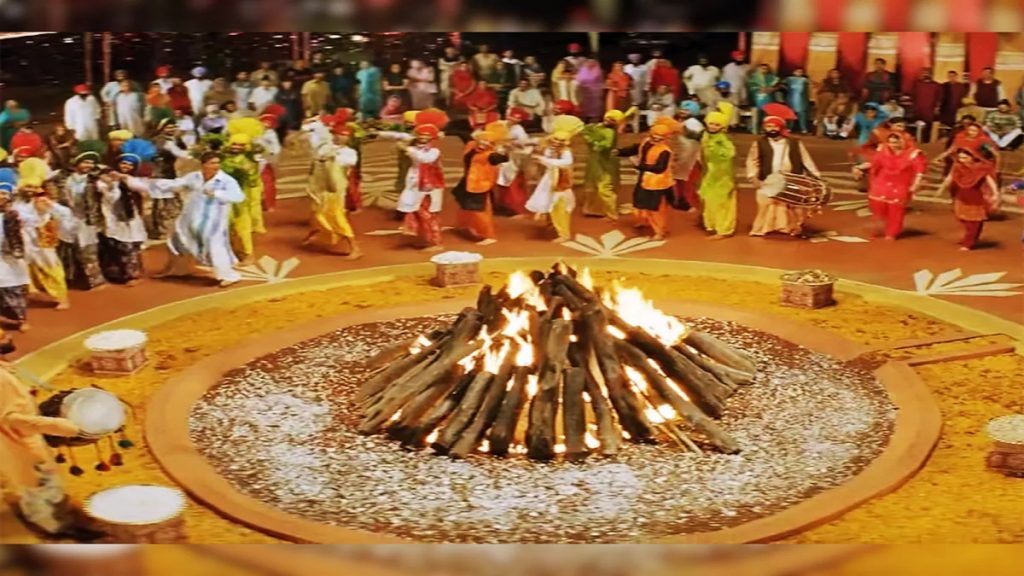Did you know? Amidst the celebrations and excitement of the Lohri festival, we tend to overlook the facts about it. As Lohri is around the corner, this is the ripe time to look into 6 lesser-known facts you must know about Lohri. This Punjabi folk festival is mostly celebrated by Sikhs and Hindus on 13th January every year in the Northern part of India.
People indulge in merrymaking with bhangra or gidda on peppy beats and sing Punjabi songs. Clad in colorful clothes, people relish the savories like popcorn, peanut and sesame seed biscuits (gajak), and peanuts.
So, let’s move beyond bonfire and popcorn fun this time and look into some interesting facts about Lohri.
6 Lesser-Known Facts You Must Know About Lohri
Apart from its significance, Lohri is popularized majorly by Bollywood. But people still don’t know many facts about this harvest festival of Punjab that they should. So, here are some of the interesting Lohri facts.
1. How Did Lohri Get Its Name?
As traditional foods, til and rorhi (jaggery) are enjoyed on the festival. When put together, til and rorhi become tilorhi. With time, tilorhi turned into Lohri. Being belly-warming foods, til and jaggery cleanse our bodies and instill renewed vigor as we gear up to welcome seasonal change.
2. Is Lohri Auspicious?
As it stands for fertility, the first Lohri is considered auspicious for a new bride and a newborn baby.
3. Why is Fire Worshipped on Lohri?
The festival marks the coldest night of winter and the harvest of rabi crops. On the last day of Paush as the sun changes its course, Lohri marks the end of winter and the onset of Magha. That is why fire is worshipped on Lohri. Those who wonder why do we celebrate Lohri on 13th January, the answer is that the festival marks the beginning of longer days.
4. What is Put in Lohri Fire?
In the holy fire of Lohri, people throw til, peanuts, gajak, puffed rice, and popcorn. These foods enhance the significance of fire on Lohri as throwing food in the bonfire represents that the old year is burnt and a new year begins.
As January is traditionally the time to harvest sugarcane crops, sugarcane products like jaggery and gajak are quintessential elements of Lohri celebrations. While throwing food in fire, people chant “aadar aye dilather jaye” which means ‘may honor come and poverty vanish’.
5. Lohri Legends
There are many questions about the origin of Lohri. As per the scholars, the tale of Dulla Bhatti is the main legend behind the celebration of this festival.
Believed to be a Muslim highway robber, Dulla Bhatti lived in Punjab during the reign of Akbar. However, he not only robbed the rich but also rescued Hindu girls, being taken forcibly to be slaves in the Middle Eastern market.
His daring deeds didn’t stop here. He also got them married to Hindu boys and even provided them dowry!
It is because of his works, Punjabis looked upon him as their Robin Hood. It is thus, how the celebration of Lohri began. And Dulla Bhatti is even the center of Lohri’s song lyrics in which people express their gratitude to him.
6. What is the Story Behind the Lohri Song?
A much-loved tradition of Lohri is to walk around the bonfire, offer prayers, and sing Lohri songs like “Sunder Mundriye”. And here is another among the fun facts about Lohri. The legendary Dulla Bhatti is the central character of most Lohri songs.
As per popular belief, one of the girls whom Dulla Bhatti had saved was known as – Sunder. He adopted and married her like his daughter. So, many Lohri songs have their mention that people sing and dance as they gather around the bonfire. On Lohri, people sing these songs in groups that usually end with the exclamation ‘ho’. Let’s have a look at one of these songs as we explore things to know about Lohri –
“Sunder Mundriye ho!
Tera Kaun vichaara ho!
Dullah Bhatti walla ho!
Dulhe di dee vyayae ho!
Ser shakkar payee ho!
Kudi da laal pathaka ho!”
With many beliefs and folklores related to Lohri, people simply focus on the revelries while believing each. Apart from enjoying Punjabi folk songs and traditional dances, people gorge on lip-smacking food such as the much-loved sarson ka saag and make ki roti.
With these lesser-known facts, you must know about Lohri, you can welcome Lohri this year in the light of more information. The sputtering bonfire celebration carries messages to the sun. Therefore, the day after Lohri is sunny and warm. It marks an end to the cold winter days, followed by the bright days beginning from Makar Sankranti, and within few months you can start with your favorite summer foods. Celebrate this festival that articulates togetherness and bonhomie
Lohri is here to warm your hands and your hearts.
Wishing you all a very Happy Lohri!
May this festival bring you happiness, prosperity, and good health.










